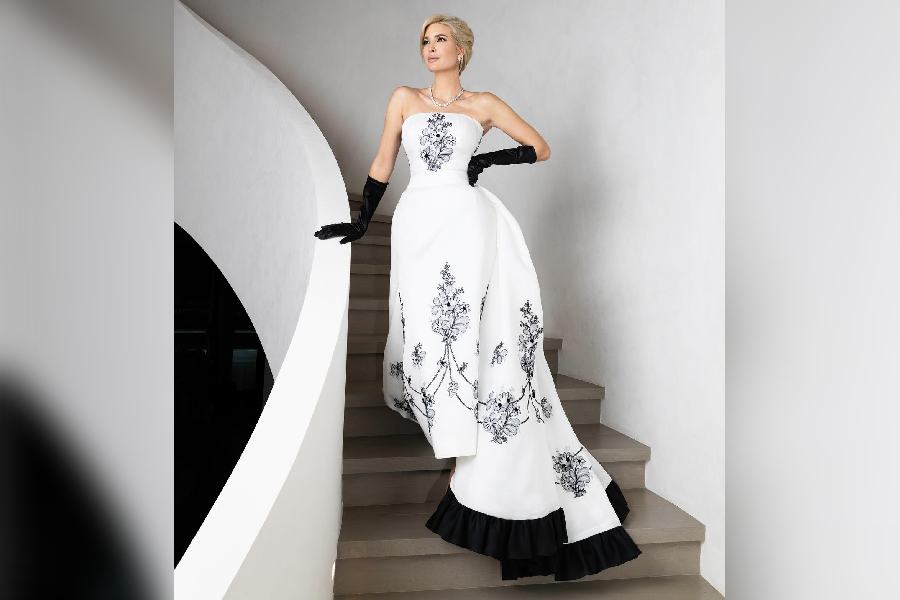At the height of the Kisan Long March in 2018, the front page of this newspaper carried an image of the sole of a farmer’s foot, blistered and bloody from walking. That foot effectively told the story of deprivation, exploitation, labour, hardship and, more importantly, resilience and resistance of the farming community. Inspired by the same
movement, Prabhakar Pachpute’s Sea of Fists (on view at TRI Art & Culture till Monday) also puts the ravaged bodies of farmers and miners in the spotlight.
The gallery space becomes a dystopic, charred world of sooty black and white — the earth scorched by human greed and leached of almost all colour and signs of life. Against walls lined with charcoal sketches of this singed land are plywood cut-outs of humanoids — signature beings in Pachpute’s oeuvre — whose bodies have become fused with the tools of their trade, with pick-axes and various other mechanical parts for heads, arms and limbs. While their arms and legs are robust and shaped by years of toiling on the earth — be it on the farm or in the mines — their bodies are like a collection of hollowed-out skeletal shapes or mechanical bits. Part human, part animal, part machine, these grotesques are metaphors for Pachpute’s concern for the environment that humans and their machines and technology have been destroying systematically. The three are caught in such an indissoluble embrace that they have grown into each other. The destruction of human and natural resources by capital could not have found a more powerful imagery.
While solitary hillocks and dead tree stumps represent the plight of individual farmers who succumb to adversities, anthills become signs of unions. Anthills take on human shapes and just like ants, the workers’ bodies become a force to reckon with when they unite. Tangles of bodies — a symbol of strength in unity — with their strong, clenched fists raised in protest thus seethe with rage, more human-like in their appearance than those bodies that have metamorphosed into predatory machines. Strikingly, as if taking heart from them, even the machine-like beings sprout clenched fists.
Humans are not the only ones to have Pachpute’s empathy. At the centre of the gallery stands the solitary sculpture of a creature resembling a bull with a raking plough for its burdened, bent head. Notwithstanding its bony, jutting bits, hollow insides and hooves bound by contraptions that rob it of free will, the bull toils on, steadfast in its labour and the hope of reaping some rewards in exchange for the back-breaking work. Clenched fists spring from within this creature too — a sign not only of the protest that it is capable of registering but also of its resolve to persevere in the face of hardships.
These signs of protest notwithstanding, Pachpute’s vision is stark and bleak, conjuring up a post-apocalyptic world devoid of greenery, where the ground is barren and unyielding. This vision is shaped and coloured by first-hand experience. Having grown up in a farming family whose land had to be sold off to make way for a mine and whose family members subsequently went to work at those mines, Pachpute knows well the relentless depredation on nature and environment by humankind and the devastating effects that this has on people, both physically and mentally. It is this history that
also makes his primary choice of medium — charcoal — so important. He carries his coal-stained past into the ‘white cube’ of the gallery, disturbing the pristine walls with drawings in charcoal and soot.

![Prabhakar Pachpute, Sea of Fists, Installation view from TRI, Kolkata, 2024. [Courtesy the artist, Experimenter & TRI.]](https://assets.telegraphindia.com/telegraph/2024/Apr/1712973688_etchingsfinal.jpg)








